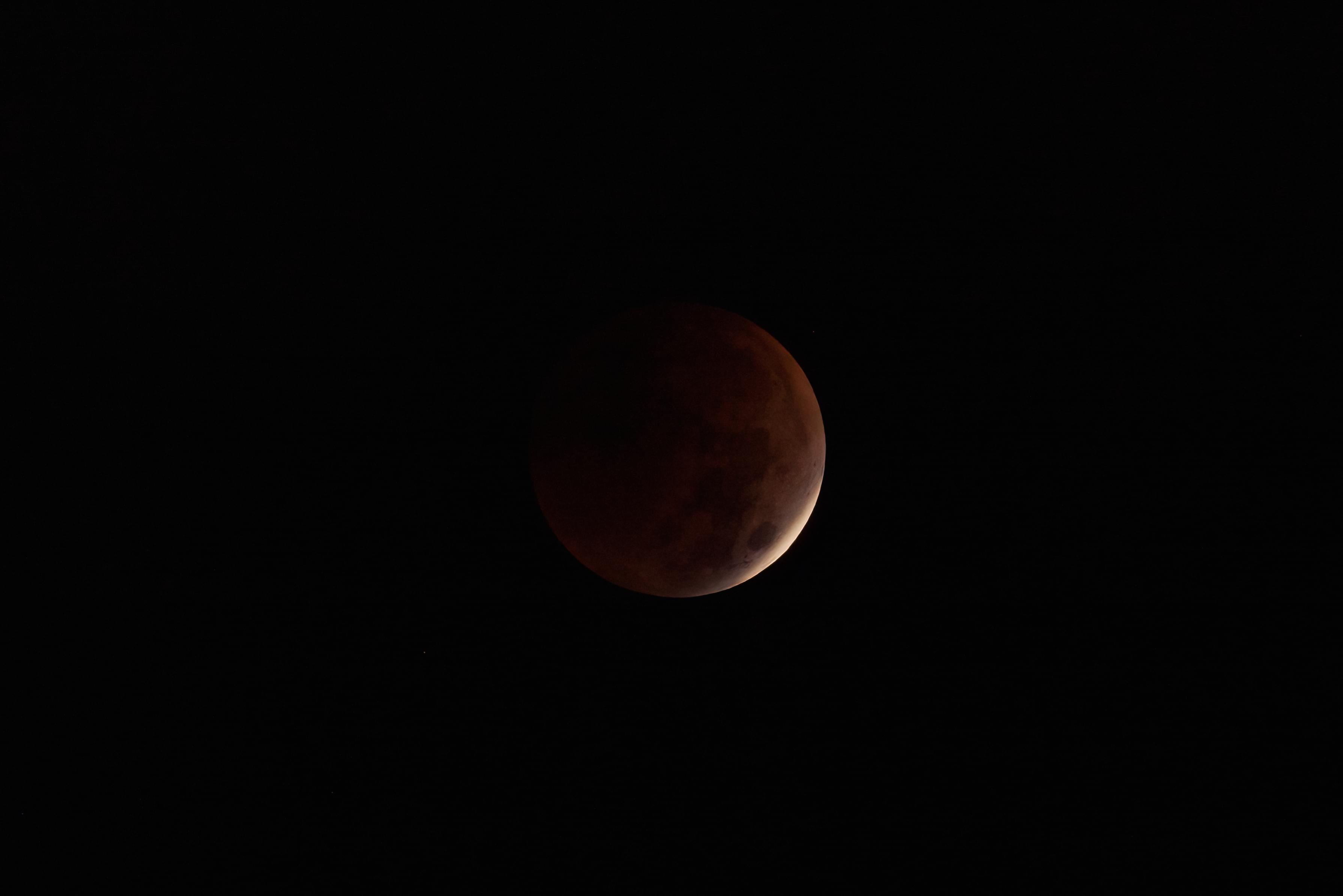We were lucky that we had a clear sky this morning to observe the lunar eclipse!
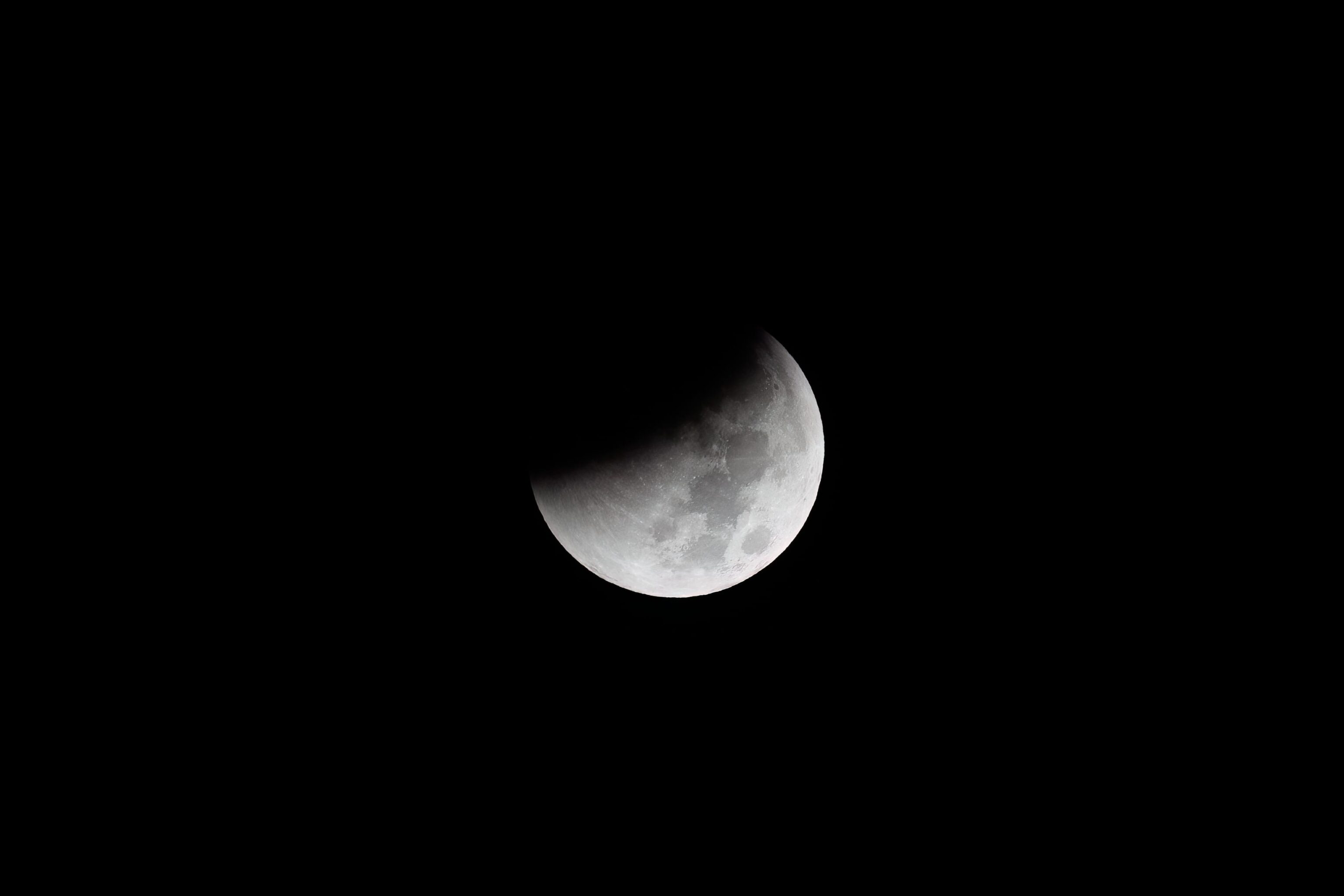
We started out a bit late with our first photograph taken at 4:33am. The partial eclipse began earlier at 4:09am. About a third of the moon was already in the Earth’s shadow.
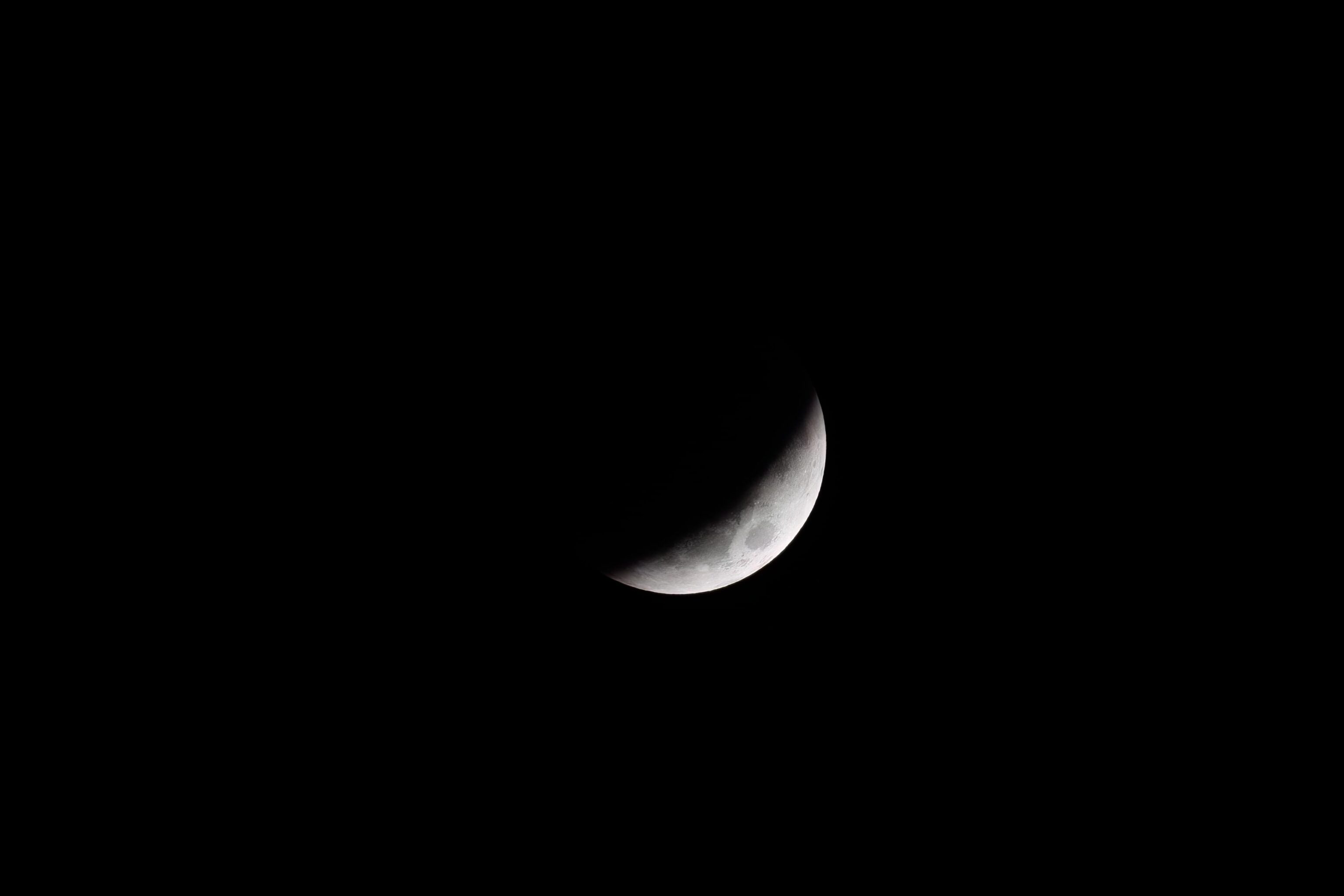
We watched as the moon gradually disappeared from view. The illuminated portion of the moon was still bright enough that we could not see any of the shadowed areas. The curvature of light through the Earth’s atmosphere allows us to see the eclipsed portion of the moon during a total lunar eclipse, however, the light is extremely dim compared to direct illumination. NASA has an excellent article explaining how lunar eclipses appear.
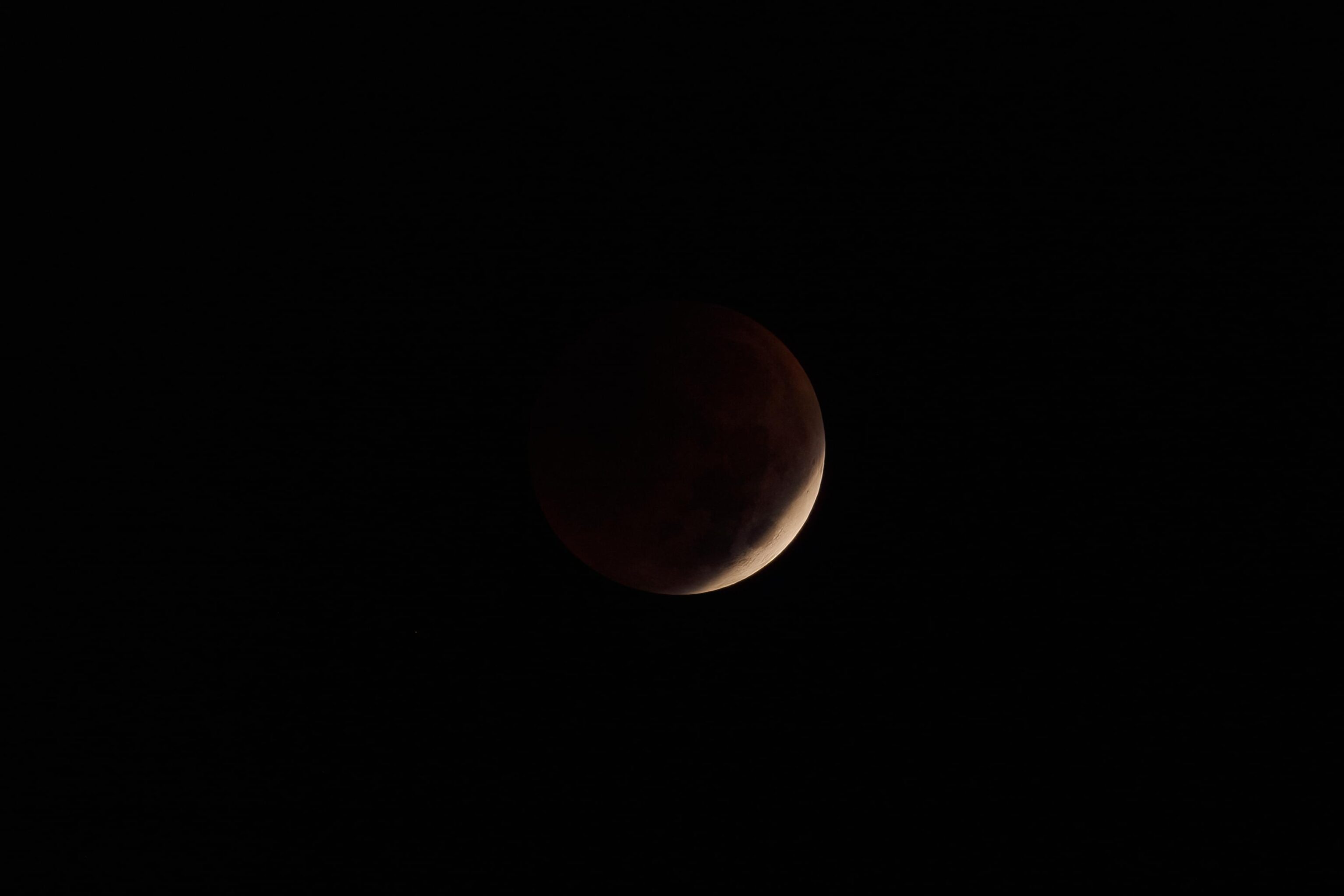
About twelve minutes later, a small slice of sunlight was visible on the moon. It was dark enough that we could start to see the eclipsed part of the moon appear red.
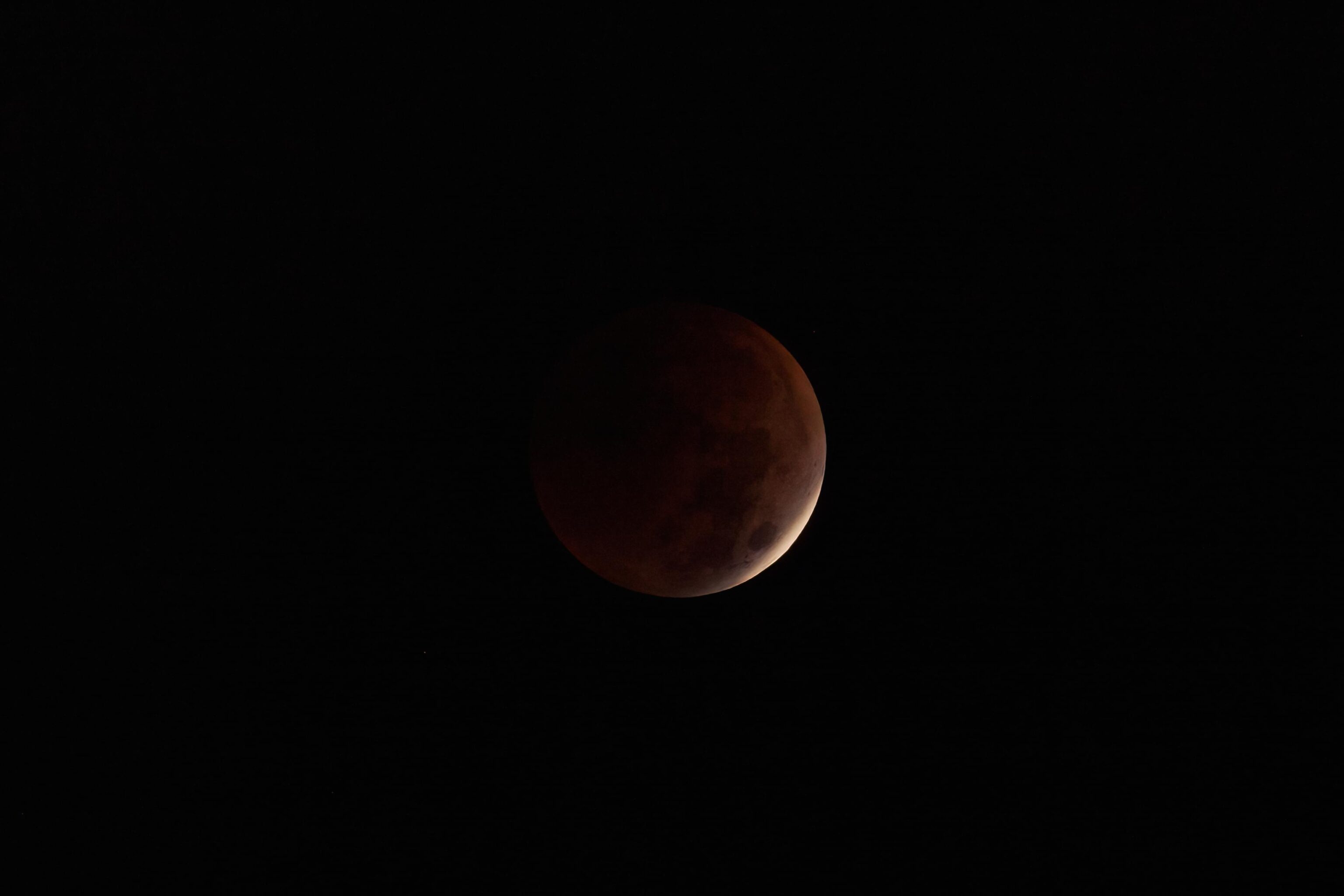
Soon, just a tiny sliver of the moon was directly illuminated. The remainder of the moon was much easier to see!
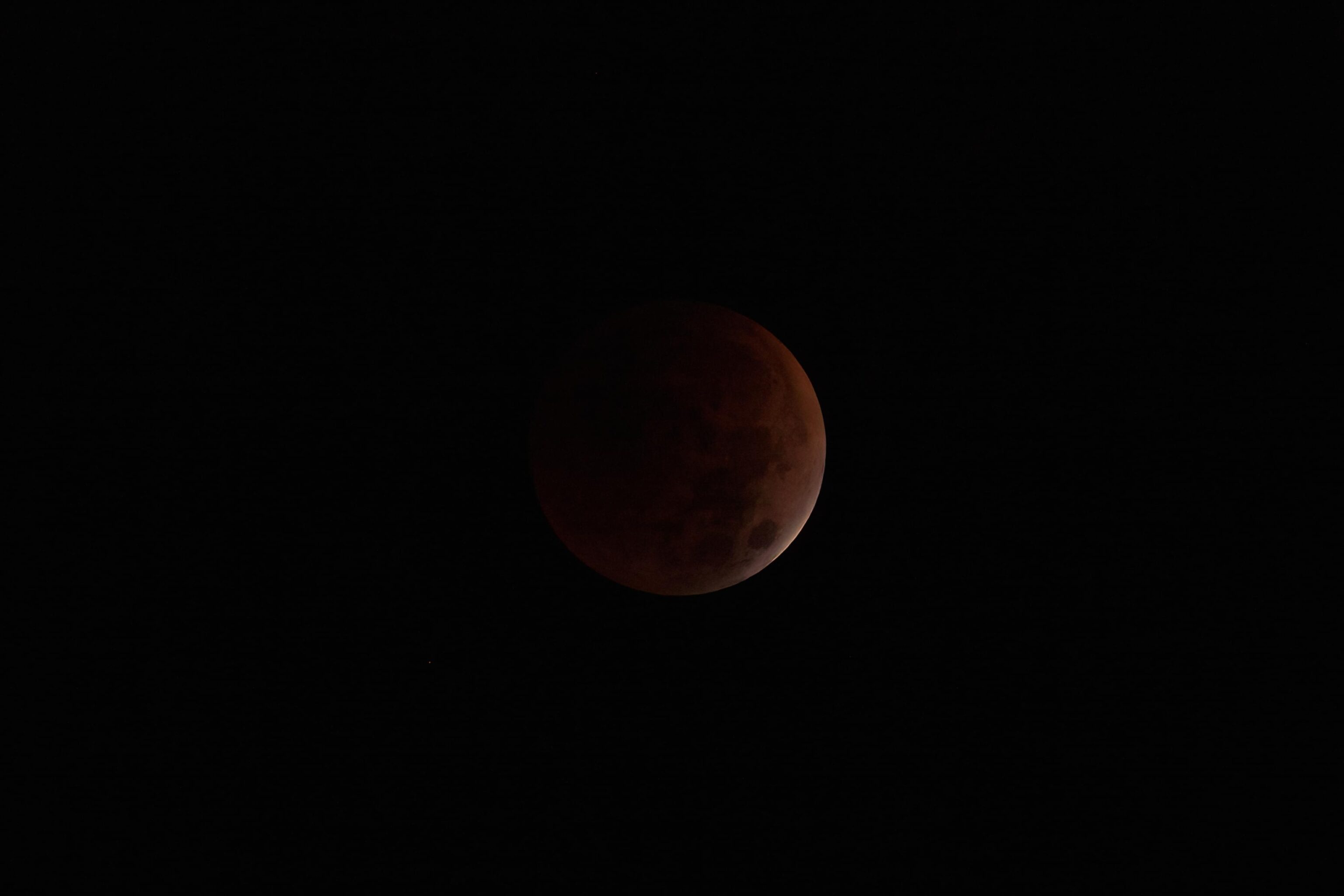
The moon a few seconds after the official full eclipse time at 5:16:39am!
We created a timelapse of the final five minutes or so before full eclipse, plus a minute or so afterwards.
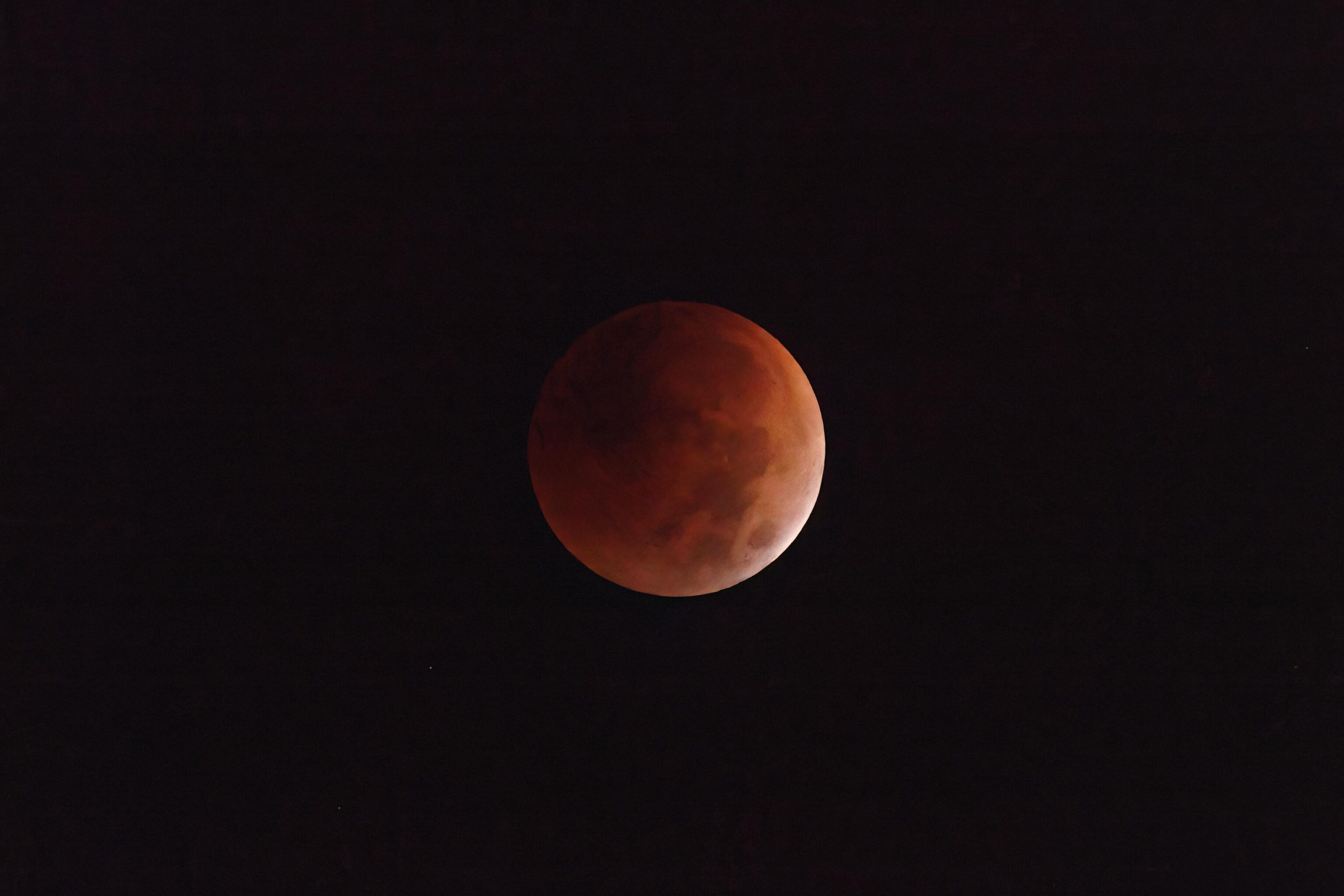
A brightened view of the moon, the same photo used for the final frame of the timelapse.
After full eclipse, the moon remained fully in the shadow of the sun for more than an hour, with maximum eclipse occurring at 5:59am. During this time, the moon gradually gets darker and darker. Unfortunately, we could not see the moon during maximum eclipse due to tall trees blocking the view.
Unrelated to the Eclipse, we observed the International Space Station around full eclipse! The sky is generally pretty bright in the suburbs with a high amount of light pollution. We could only see a few of the brightest stars. Airplanes are a common sight with their blinking navigation lights and beacons. We happened to be looking at some of the visible stars and an airplane that was flying by when we noticed a fast moving bright white light. Definitely not an airplane!
At first, I thought it could be the resupply mission for the ISS from Wallops. Generally, rockets launched from Wallops are supposed to be visible from here. I’ve never observed one before though so am not quite sure how it should appear. However, it turns out that the rocket actually launched yesterday morning. Could it be the ISS then? A quick search in the Stellarium app confirmed that it was! Definitely surprising just how bright it was!
Technical Commentary
One thing we did not count on this morning was the wind. It was calm when we went outside so it seemed safe to use our tripod at maximum height. Maximum height makes it easier to interact with the camera. Unfortunately, it ended up becoming rather gusty around full eclipse. Once full eclipse occurred, a longer exposure was necessary to adequately photograph the dark red moon. It turned out to be too windy for that. I should have lowered the tripod as that greatly increases its stability.
The Canon R5’s autofocus is incredible compared to older SLR focusing technology and it does really well on a full moon. However, it apparently struggles when the moon is less than an eighth or so illuminated. There probably just isn’t really enough to focus on there. Luckily, I caught it before starting the timelapse sequence and switched to manual focus. It does do really well on pinpoint light sources like bright stars though.


